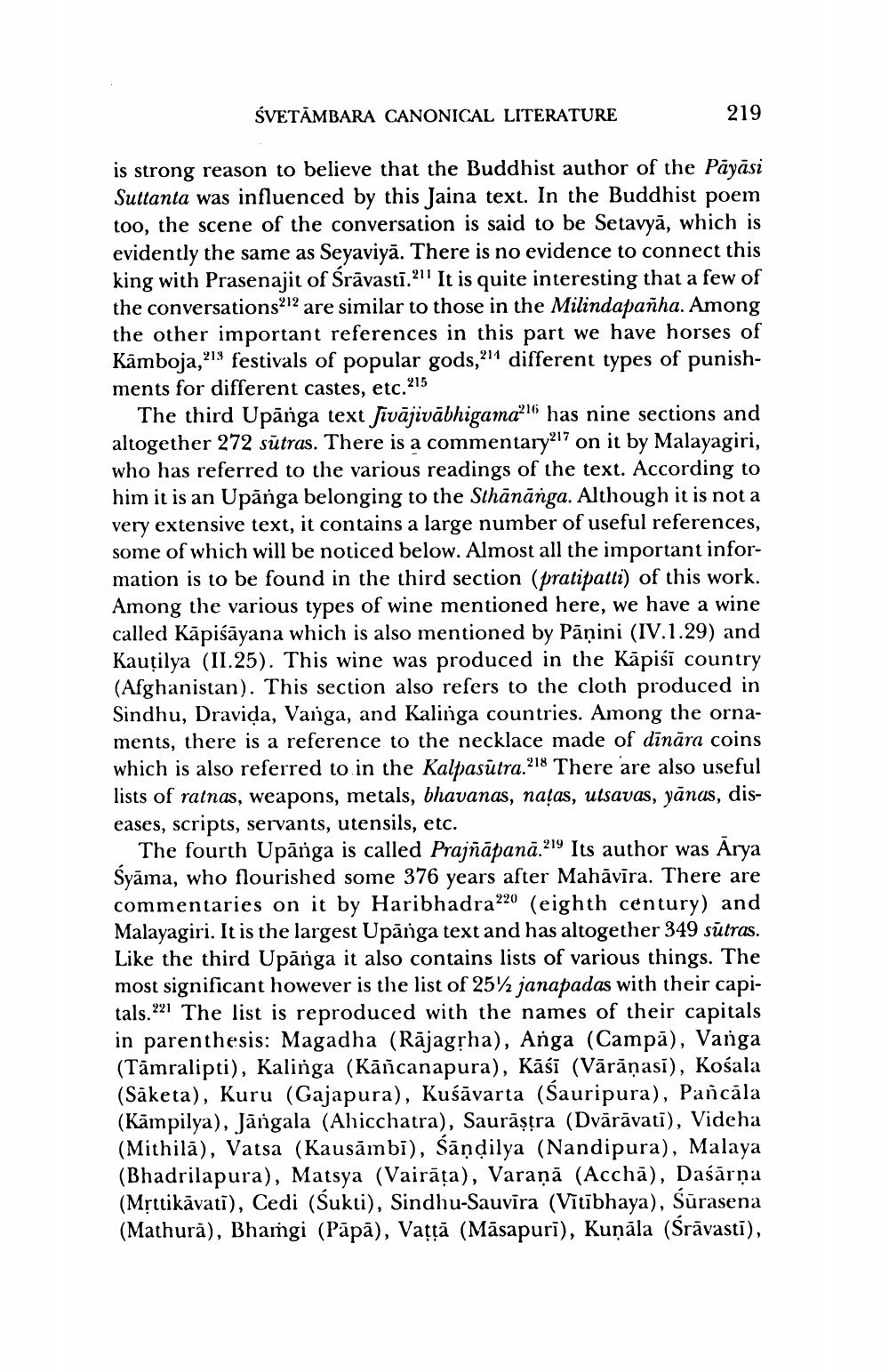________________
ŚVETĀMBARA CANONICAL LITERATURE
219
is strong reason to believe that the Buddhist author of the Pāyāsi Suttanta was influenced by this Jaina text. In the Buddhist poem too, the scene of the conversation is said to be Setavyā, which is evidently the same as Seyaviyā. There is no evidence to connect this king with Prasenajit of Srāvasti.2l! It is quite interesting that a few of the conversations212 are similar to those in the Milindapañha. Among the other important references in this part we have horses of Kāmboja,213 festivals of popular gods,211 different types of punishments for different castes, etc. 215
The third Upanga text fivājivābhigama 6 has nine sections and altogether 272 sūtras. There is a commentary27 on it by Malayagiri, who has referred to the various readings of the text. According to him it is an Upanga belonging to the Sthānănga. Although it is not a very extensive text, it contains a large number of useful references, some of which will be noticed below. Almost all the important information is to be found in the third section (pratipatti) of this work. Among the various types of wine mentioned here, we have a wine called Kāpiśāyana which is also mentioned by Pāņini (IV.1.29) and Kautilya (II.25). This wine was produced in the Kāpisi country (Afghanistan). This section also refers to the cloth produced in Sindhu, Dravida, Vanga, and Kalinga countries. Among the ornaments, there is a reference to the necklace made of dīnāra coins which is also referred to in the Kalpasūtra.218 There are also useful lists of ratnas, weapons, metals, bhavanas, națas, utsavas, yānas, diseases, scripts, servants, utensils, etc.
The fourth Upānga is called Prajñāpanā.219 Its author was Ārya Syāma, who flourished some 376 years after Mahāvīra. There are commentaries on it by Haribhadra 220 (eighth century) and Malayagiri. It is the largest Upānga text and has altogether 349 sūtras. Like the third Upānga it also contains lists of various things. The most significant however is the list of 25% janapadas with their capitals. 221 The list is reproduced with the names of their capitals in parenthesis: Magadha (Rājagļha), Anga (Campā), Vanga (Tāmralipti), Kalinga (Kāñcanapura), Kāśi (Vārāṇasi), Kośala (Säketa), Kuru (Gajapura), Kuśāvarta (Sauripura), Pancāla (Kāmpilya), Jāngala (Ahicchatra), Saurāșțra (Dvārāvati), Videha (Mithilā), Vatsa (Kausāmbī), Sāņdilya (Nandipura), Malaya (Bhadrilapura), Matsya (Vairāța), Varaņā (Acchā), Daśārņa (Mrttikāvati), Cedi (Sukti), Sindhu-Sauvīra (Vitibhaya), Sürasena (Mathurā), Bhamgi (Pāpā), Vațțā (Māsapuri), Kuņāla (Srāvasti),




